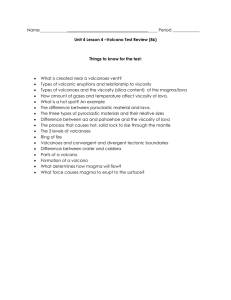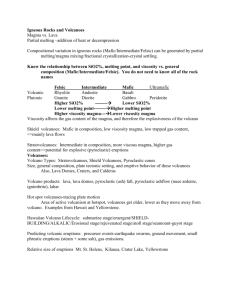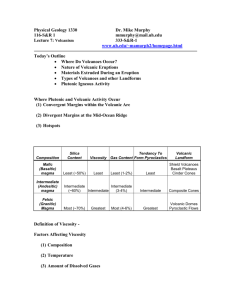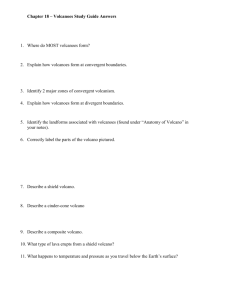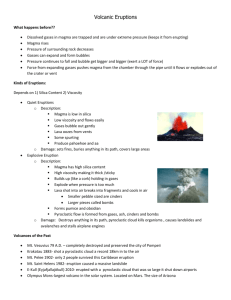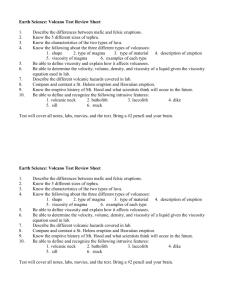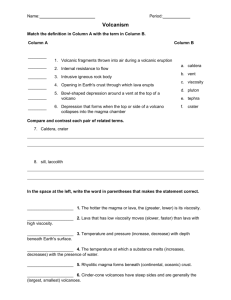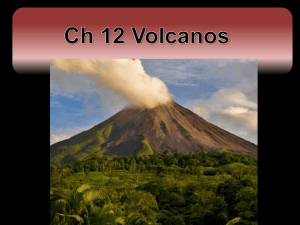Volcano Types & Viscosity: A Geology Presentation
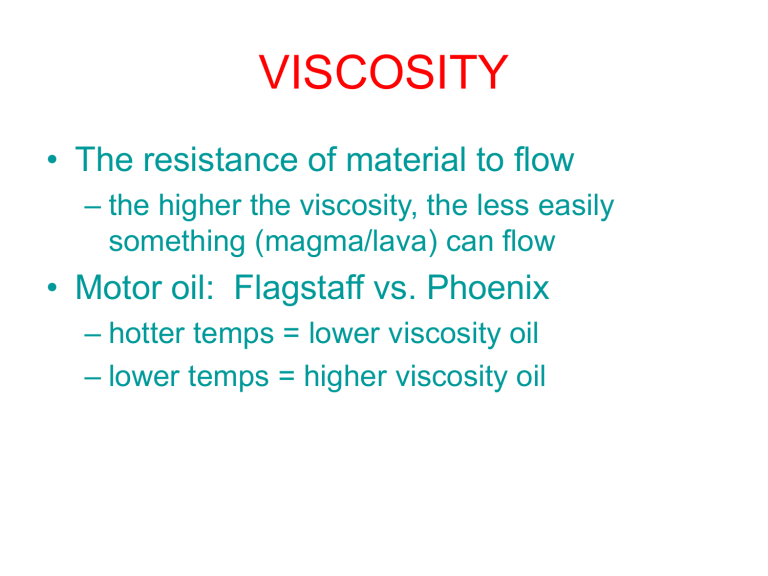
VISCOSITY
• The resistance of material to flow
– the higher the viscosity, the less easily something (magma/lava) can flow
• Motor oil: Flagstaff vs. Phoenix
– hotter temps = lower viscosity oil
– lower temps = higher viscosity oil
Cinder cones/maars
Basalt
Short lived (<10 years?)
Cinder/scoria, lava flows (out the bottom)
Most any tectonic environment
Tephra, tephra, tephra
~1 km wide, 300 m tall
Shield volcanoes
• Very wide, tall
• Centuries to a few million years
• Basalt
• Often have a caldera at the rim
• Very low angle slopes
• Highly fluid flows VERY low viscosity
• Subduction zones and hotspots (larger volcanoes = hotspots)
• Cool picture is here: http://mars.jpl.nasa.gov/mep/science/oly-az.jpg
Domes
• Relatively small (few hundred m on a side)
• (usually) dacite to andesite to rhyolite
• Convergent/subduction margins
• Pyroclastic flows often due to collapse of the dome
• Can be several thousand years, but really variable – a few years to several thousand
• Toothpaste
• http://a.abcnews.com/images/US/volcanoe_1120
04_east_ssh.jpg
Stratovolcanoes (also called composite volcanoes)
• Erupts everything (pyroclastic, lava, mudflows
(lahars))
• Intermediate (basalt to dacite)
• Hundreds of thousands years lifespan
• Big! 4000’ high from base (so Cascade volcanoes often 12,000’ or more)
• Subduction zone/convergence
• High viscosity, often explode
• polygenetic
Calderas
• Largest volcanoes on earth – 15 x 30 km
• Largest eruptions 2-1000 km 3
• Magma rising to earth’s surface swells the surface, erupts pyroclastic material, magma chamber collapses.
Shallow magma chamber.
• RHYOLITE!! (also dacite)
• All types of tectonic settings
• Lifespan to several million years
• Tuff is the most common erupted material, both as flows and as material falling from the air: pyroclastics rule
• Vents along margins of caldera (lava domes), earthquakes common
